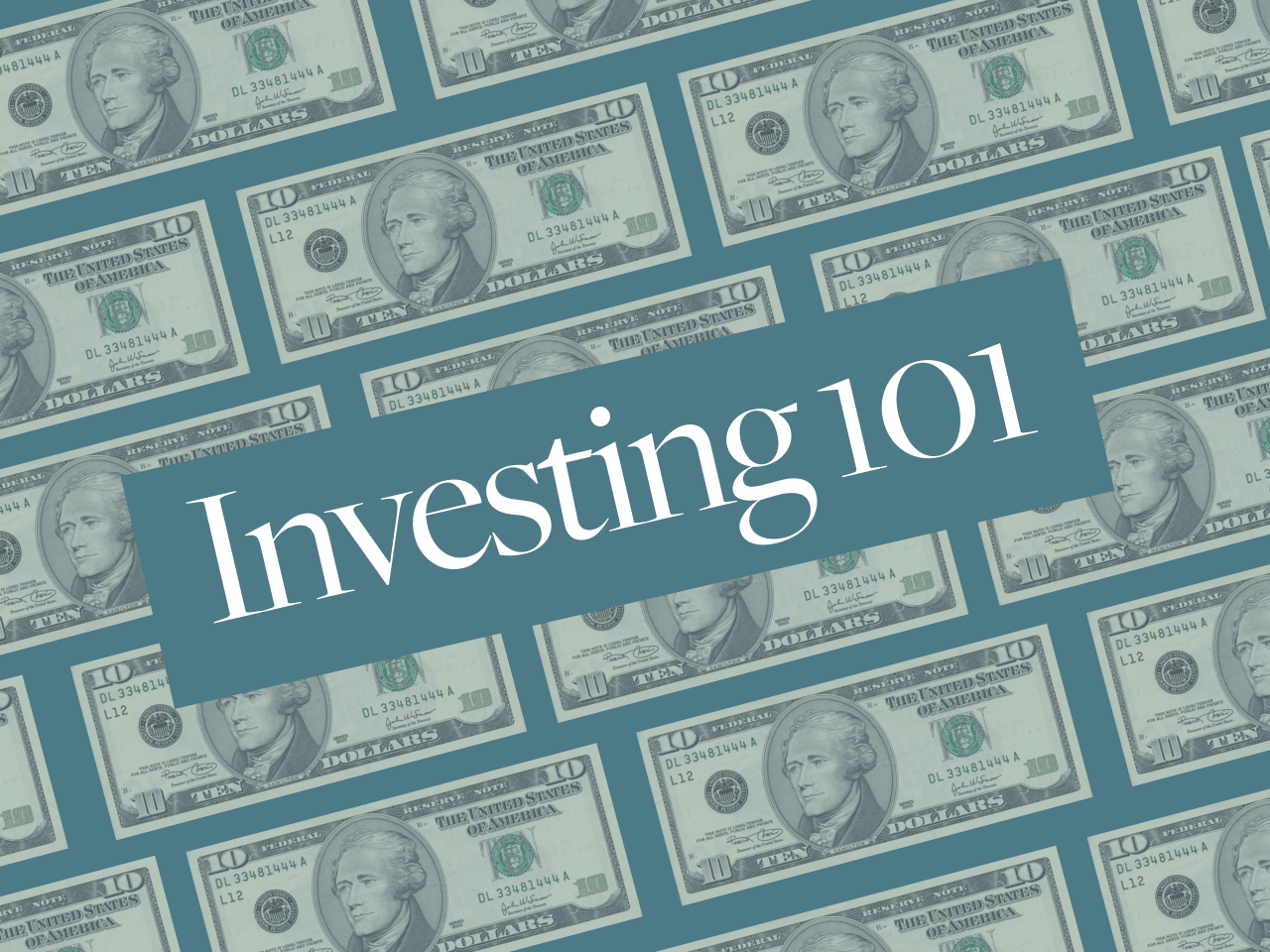Why the Taxable Brokerage Account (Almost) Beats the Roth IRA in 2025
September 27, 2021
The Wealth Planner
The only personal finance tool on the market that’s designed to transform your plan into a path to financial independence.
Get The Planner
Subscribe Now
Biggest Finance Newsletter for Women
More than 10 million downloads and new episodes every Wednesday.
The Money with Katie Show
Recommended Posts
Merely typing that sentence felt blasphemous, but I was struck with a realization I couldn’t ignore when filming my NEVER PAY TAXES AGAIN YouTube video (and yes, all caps is a necessity on YouTube).
You see, the entire video is premised on the fact that long-term capital gains are taxed really favorably. Like, really favorably.
How favorably? Well, a married couple with no other income that files their taxes jointly could redeem $96,700 of long-term capital gains completely tax-free in 2025. (And singles? $48,350.)
$96,700 of capital gains is a lot of money to get tax-free, considering $96,700 of income from earned wages would cost a married couple nearly $15,034 in federal and FICA taxes.
So you’re probably like, “Great, this isn’t news, Katie—we’ve been over the fact that we can withdraw $96,700 tax-free! Where does the Roth IRA come into this?”
Instances where a taxable account competes with a Roth IRA
One of the benefits of becoming financially independent is embracing flexibility and freeing yourself from a life that costs a lot of money. If you’re someone (or rather, a couple) who can live on $96,700 per year or less, I’d argue that the taxable brokerage account makes almost as much sense as a Roth IRA in most circumstances, and more sense in others.
What if $96,700 isn’t enough?
What about $126,700? Could you two live on $126,700 in take-home pay each year?
This extra $30,000 comes from the fact that you can convert a $30,000 chunk of your 401(k) to Roth (and therefore make it usable, with some stipulations) and stay under the standard deduction for couples filing jointly, which means you get a 0% tax rate on the conversion.
Supplement that with $96,700 of long-term capital gains from your brokerage account and—bada bing, bada boom—$126,700 of tax-free income. Think that’s enough to live on tax-free?
That’s a budget of $10,588 per month. I definitely think we could comfortably make that work.
So if you think that’s a feasible amount of money (in today’s purchasing power, that is; remember, these limits will likely rise with inflation to keep up with purchasing power) for you and your spouse to live on and you wouldn’t be withdrawing more than that from a Roth IRA anyway, there’s functionally no difference between the Roth IRA and taxable brokerage account at the time of withdrawal.
What about the concept of tax-free growth?
As you likely know by now if you’ve been hanging around my corner of the internet long enough, the one downside to a taxable brokerage account is that you have to pay taxes on your dividend income every year, even if you reinvest them.
(Assuming you’re buying and holding index funds or index fund ETFs in your taxable brokerage firm and not selling them, you wouldn’t be charged tax on your unrealized capital gains annually—but the dividends are a different story.)
Let’s pretend your taxable brokerage account contains one ETF: VTI, the Vanguard Total Stock Market ETF.
Assume that VTI has paid a dividend yield around 2% per year (give or take a few basis points).
If your taxable brokerage account has, say, $1M in it, you’re going to get a 2% dividend yield each year worth $20,000.
That’s pretty baller in retirement (hello, $20,000 of guaranteed income!), but along the way, you’re going to be paying taxes on that dividend yield.
In that sense, it’s a race against the clock—you want as few tax seasons as possible to pass between when you start working toward your FI number in your taxable brokerage and when your earned income drops to zero.
Why? Because once your earned income drops and you begin withdrawing your capital gains, you can withdraw the dividends as part of your $96,700 of tax-free income. The qualified dividends would fall within the 0% bracket.
How dividend yield is taxed
Assuming the dividends are qualified (assume >90% of VTI’s dividends have been qualified), they’d be subject to the same favorable capital gains tax rates as realized gains are (0% up to $96,700 of income and 15% thereafter, up until an ungodly amount somewhere in the $600,000 range).
The amount of income tax you’ll pay on your dividends depends a lot on how much money you make, but it’s probably safe to assume you’re going to pay 15% on them.
This is no big deal when your account is small. For example, if a taxable brokerage account with $50,000 worth of VTI earns a 2% dividend, you’re paying 15% on $1,000 (about $150).
But 15% of $20,000 (2% dividend yield on $1M) is $3,000.
That would mean—leading up to your drawdown of this account—your dividend yield would be taxed 15% per year (assuming you and your spouse are making more than $96,700 and less than $600,050 of earned income and dividend income together).
If you increase the value of this account by $50,000 per year (starting with $100,000 and taking 19 years to reach $1M), you’d pay a total of $31,350 in dividend taxes over 19 years.
But wait, that’s not all
We can probably assume those tax payments represent opportunity cost.
Even if we aren’t withdrawing the money from the account to pay the dividend tax, the money that we use to pay the taxes can’t be invested anymore. If you assume the average annual dividend tax ($1,650) had been invested every year and gotten average 8% returns, we’d be looking at around $75,000 in opportunity cost.
If it takes a really long time to hit $1M in your taxable brokerage account (20 years+), the dividend taxes add up.
But what if you could’ve done it in 10 years? Then, there are simply fewer tax seasons during which you’re taxed on your annual yield, so although you end up with the same amount of money, doing so faster means you pay $16,500 in taxes over 10 years instead of $31,500 over 19.
Remember, we’re trying to minimize the amount of time that our qualified dividends are in the 15% capital gains tax bracket. As soon as we retire and our earned income drops to zero, the dividends fall into the 0% tax bracket and we’re golden, Rich Girls.
How much do we pay in dividend taxes along the way if we can do it in 10 years?
Going from $100,000 to $1,000,000 in 10 years means you’ll pay $16,500 in dividend taxes and suffer 10 years of opportunity cost, roughly equal to $27,000 if you would’ve received an 8% return annually on the money you used to pay your taxes on your dividend income.
That’s the cost of a taxable brokerage account, and the faster you reach early retirement, the lower it is.
Where super wealthy couples may run into trouble
If your taxable brokerage account’s portfolio value is >$4M, then your 2% dividend yield will be $80,000 alone. At that point, if the portfolio gets much larger, you’ll start paying 15% on the dividend income above $80,000.
At that point, you’re starting to infringe on the rich people problems wherein nobody will feel bad for you, as your biggest issue is owing a few thousand dollars in taxes each year on your multi-million dollar fortune. I think you’ll be just fine.
What’s the benefit of using the taxable account instead?
The point may be moot: In order to hit early retirement, you HAVE to use a taxable account, because the contribution limits for the Roth IRA are simply too low. It would take you a really long time to retire on $7,000 invested per year.
And while some people have access to Mega Backdoor Roth IRAs (that enable you to contribute tens of thousands of after-tax dollars to your Roth IRA through some fancy 401(k) footwork), I’d argue that the point could be made that the qualified dividend tax burden is worthwhile if it means you don’t have to lock your money up until you’re 59.5.
Because while you can access your Roth contributions early, you can’t access the growth—and since your Roth dollars are technically the most valuable, you want to use them last. It’s safe to assume that money you put in your Roth IRA will truly be the last money you ever spend, if you ever get to it (some people find that their taxable accounts and 401(k)s grow large enough that they never even need their Roth IRAs).
The point is, overfunding the Roth IRA (especially in the “mega backdoor” situation) can result in you underfunding the other accounts that are easier to access sooner, like the 401(k) (through the Roth conversion ladder) and the taxable account.
You can think of the dividend tax like a fee for using your “no rules” investment account.
Interested in opening a taxable account?
I recommend Betterment—they offer taxable investing accounts that can give you a diverse mix of stocks and bonds, depending on your investing goal and the way you answer a few questions. It’s very straightforward: There are no contribution limits, no income limits, and Betterment does not charge an additional fee to withdraw (Betterment will provide guidance on the tax impact of withdrawals).
You may also like these posts:
Featured
Looking for something?
Search all how-to, essays, and podcast episodes.
Explore
While I love diving into investing- and tax law-related data, I am not a financial professional. This is not financial advice, investing advice, or tax advice. The information on this website is for informational and recreational purposes only. Investment products discussed (ETFs, index funds, etc.) are for illustrative purposes only. It is not a recommendation to buy, sell, or otherwise transact in any of the products mentioned. Do your own due diligence. Past performance does not guarantee future returns.
Money with Katie, LLC.
Terms & Conditions | Privacy Policy
This Site Was Built by Brand Good Time



![How to Contribute Thousands of Extra Roth Dollars Each Year: The Mega Backdoor Roth IRA [2025]](https://moneywithkatie.com/wp-content/uploads/2021/09/Frame37846.webp)
